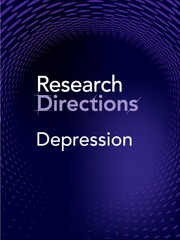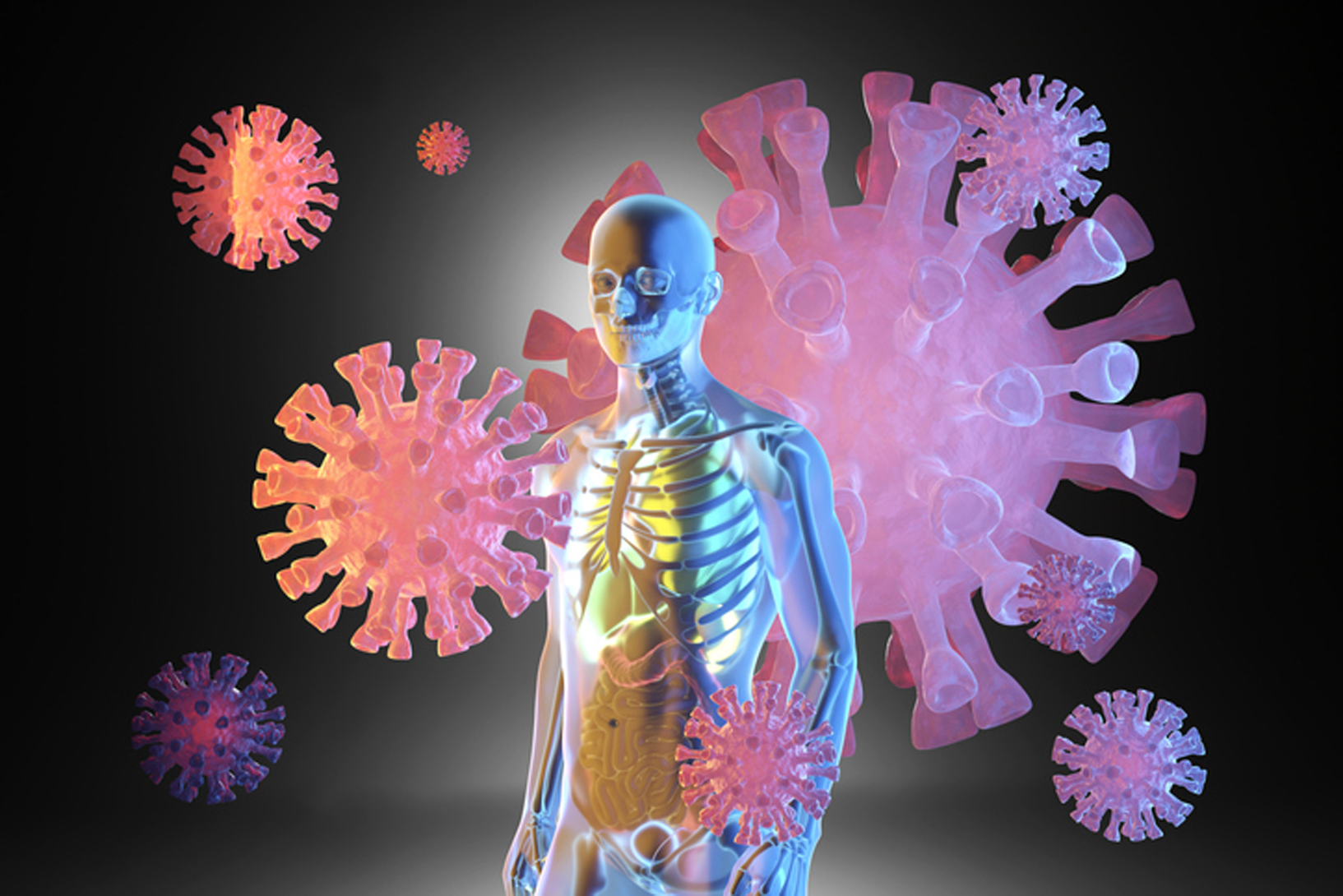Context
In both population-based and clinical cohorts, cross-sectional and longitudinal studies have reported associations between a range of non-specific markers of immune activation (e.g., pro-inflammatory cytokines) or chronic inflammation (e.g., C-reactive protein [CRP]) and depressive and other mood disorders (Dowlati et al. Reference Dowlati, Herrmann, Swardfager, Liu, Sham, Reim and Lanctôt2010; Hickie et al. Reference Hickie, Carpenter and Scott2018; Khandaker et al. Reference Khandaker, Dantzer and Jones2017; Orsolini et al. Reference Orsolini, Pompili, Tempia Valenta, Salvi and Volpe2022; Valkanova et al. Reference Valkanova, Ebmeier and Allan2013). The clinico-pathological significance, and directional relationships, of these associations tended to be downplayed as the systemic levels of these inflammatory markers were not in the ranges typical of active infective, inflammatory or significant autoimmune diseases.
By contrast, it has long been recognised that chronic systemic inflammation can contribute to neuroimmune responses and that chronic inflammation is associated with symptom profiles (most notably fatigue, pain, sleep disturbance, and reduced motor activity) that are similar to those associated with common depressive disorders (Capuron and Miller Reference Capuron and Miller2011; Dantzer et al. Reference Dantzer, O’Connor, Freund, Johnson and Kelley2008; Khandaker et al. 2021; Liberman et al. 2018; Morris et al. Reference Morris, Berk, Galecki, Walder and Maes2016). Further, those people with primary autoimmune disorders (e.g., psoriasis, systemic lupus erythematosus [SLE], thyroid disease) have long been identified as having significantly increased rates of depressive and other mood disorders (and most notably in younger women) (Benrós and Mortensen Reference Benrós and Mortensen2015; Benros et al. Reference Benros, Waltoft, Nordentoft, Østergaard, Eaton, Krogh and Mortensen2013; Hanly et al. Reference Hanly, Su, Urowitz, Romero-Diaz, Gordon, Bae, Bernatsky, Clarke, Wallace, Merrill, Isenberg, Rahman, Ginzler, Petri, Bruce, Dooley, Fortin, Gladman, Sanchez-Guerrero, Steinsson, Ramsey-Goldman, Khamashta, Aranow, Alarcón, Fessler, Manzi, Nived, Sturfelt, Zoma, van Vollenhoven, Ramos-Casals, Ruiz-Irastorza, Lim, Kalunian, Inanc, Kamen, Peschken, Jacobsen, Askanase, Theriault, Thompson and Farewell2015; Matcham et al. Reference Matcham, Rayner, Steer and Hotopf2013; Siegmann et al. Reference Siegmann, Müller, Luecke, Philipsen, Kornhuber and Grömer2018).
For laboratory markers such as a CRP, while elevation above 3 mg/L is still well within the normal range, it is known to increase the risk of atherosclerosis (by about 4-fold) (Fonseca and Izar Reference Fonseca and Izar2016; Ridker Reference Ridker2003) and has also been reported to be associated with reduced response to antidepressant therapies (Orsolini et al. Reference Orsolini, Pompili, Tempia Valenta, Salvi and Volpe2022). Most commonly, it is assumed that increased levels of inflammatory markers in those with depressive or other mood disorders are secondary to the recurrence or chronicity of the illness itself or its physical health correlates (e.g., obesity, metabolic disturbance), rather than being indicative of an underlying causative factor.
More recent findings suggest that the traditional view, which discounts the clinic-pathological significance of low levels of inflammation in those with depressive or other mood disorders, may need revising as:
-
the detection of immune activation in younger clinical and population-based cohorts suggests that such activation may not simply be correlates of chronicity or treatment;
-
detailed exploration of more specific markers in smaller subgroups of cohorts with depression or other major mood disorders (e.g., atypical or bipolar depression) indicates higher rates of perturbations;
-
we see increasing reports of the linking of immune activation with other pathophysiological processes, including metabolic disturbance or circadian rhythm disturbance (Hickie et al. Reference Hickie, Carpenter and Scott2018; Lamers et al. Reference Lamers, Milaneschi, Vinkers, Schoevers, Giltay and Penninx2020; Tickell et al. Reference Tickell, Rohleder, Ho, McHugh, Jones, Song, Hickie and Scott2021);
-
clinical trials investigate the potential of both classical anti-inflammatory agents (e.g., aspirin, NSAIDs, COX-2 inhibitors) and more targeted immune modulators (e.g., minocycline) (Arteaga-Henríquez et al. Reference Arteaga-Henríquez, Simon, Burger, Weidinger, Wijkhuijs, Arolt, Birkenhager, Musil, Müller and Drexhage2019; Hellmann-Regen et al. Reference Hellmann-Regen, Clemens, Grözinger, Kornhuber, Reif, Prvulovic, Goya-Maldonado, Wiltfang, Gruber, Schüle, Padberg, Ising, Uhr, Friede, Huber, Manook, Baghai, Rupprecht and Heuser2022; Müller Reference Müller2019; Rosenblat and McIntyre Reference Rosenblat and McIntyre2018). These may present a more tailored approach based on the profiles of biomarkers identified in participants, younger cohorts with primary major depression, as well as in cohorts with medical comorbidity (e.g., autoimmune disorders) and depression;
-
we see wider clinical adoption of monoclonal-antibody-based therapies in clinical neurology and rheumatology, with indications of their impacts on comorbid depressive syndromes – notably in cohorts with autoimmune disorders with high rates of concurrent depressive symptoms;
-
novel neuronal surface antibodies that are associated with rare neuropsychiatric disorders, including mood disorders, are identified (Dalmau et al. Reference Dalmau, Geis and Graus2017; Zong et al. Reference Zong, Correia-Hoffmann, Mané-Damas, Kappelmann, Molenaar, van Grootheest, Penninx, Rouhl, Losen and Martinez-Martinez2020);
-
recent reports suggest that relatively low levels of immune markers are inversely correlated with response to conventional antidepressant therapies (Arteaga-Henríquez et al. Reference Arteaga-Henríquez, Simon, Burger, Weidinger, Wijkhuijs, Arolt, Birkenhager, Musil, Müller and Drexhage2019; Haroon et al. Reference Haroon, Daguanno, Woolwine, Goldsmith, Baer, Wommack, Felger and Miller2018; Orsolini et al. Reference Orsolini, Pompili, Tempia Valenta, Salvi and Volpe2022);
-
recent research describing the interaction between peripheral adaptive immune responses and the brain’s intrinsic non-specific immune effector cells, microglia (Banati Reference Banati2003; North et al. Reference North, Weissleder, Fullerton, Sager, Webster and Weickert2021). This peripheral-central cross-talk may underlie secondary progressive neuropathological changes in various mental disorders; and
-
we witness significant advances in the understanding of basic brain cell-immune signalling interactions and their neurobehavioural and neuropsychological consequences (Bower and Kuhlman Reference Bower and Kuhlman2023; Capuron and Miller Reference Capuron and Miller2011).
In this context, there is now much interest in unravelling: the causal significance of immune activation for risk of onset; the interaction with illness course; and, whether these markers can guide the selection of primary or adjunctive treatments for those with depressive or other mood disorders (or at least for specific subgroups).
So the key questions include:
-
Can clinical cohorts of people with depression, at any age, developmental phase or stage of illness, be more usefully stratified by markers of immune activation?
-
What is the evidence that peripheral markers of immune activation are associated with changes in brain function?
-
What are the best brain imaging, CSF, or other central nervous system measures to best examine, at depth, the complex interaction of the brain with the innate and adaptive immune system?
-
What thresholds for laboratory or brain imaging markers are most appropriate for the initiation of immune therapies in those with depressive or other mood disorders?
-
What conventional, immune-regulatory or novel therapies should be the subject of formal clinical trials in those people with depressive disorders who also have evidence of immune activation?
How to contribute to this Question
If you believe you can contribute to answering this Question with your research outputs find out how to submit in the Instructions for authors (https://www.cambridge.org/core/journals/research-directions-depression/information/author-instructions/preparing-your-materials). This journal publishes Results, Analyses, Impact papers and additional content such as preprints and “grey literature.” Questions will be closed when the editors agree that enough has been published to answer the Question so before submitting, check if this is still an active Question. If it is closed, another relevant Question may be currently open, so do review all the open Questions in your field. For any further queries check the information pages (https://www.cambridge.org/core/journals/research-directions-depression/information) or contact this email (depression@cambridge.org).
Competing interests
EMS is Principal Research Fellow at the Brain and Mind Centre, The University of Sydney. She is Discipline Leader of Adult Mental Health, School of Medicine, University of Notre Dame, and a Consultant Psychiatrist. She was the Medical Director, Young Adult Mental Health Unit, St Vincent’s Hospital Darlinghurst until January 2021. She has received honoraria for educational seminars related to the clinical management of depressive disorders supported by Servier, Janssen and Eli-Lilly pharmaceuticals. She has participated in a national advisory board for the antidepressant compound Pristiq, manufactured by Pfizer. She was the National Coordinator of an antidepressant trial sponsored by Servier. IBH is the Co-Director, Health and Policy at the Brain and Mind Centre (BMC) University of Sydney. The BMC operates an early-intervention youth services at Camperdown under contract to headspace. He is the Chief Scientific Advisor to, and a 3.2% equity shareholder in, InnoWell Pty Ltd which aims to transform mental health services through the use of innovative technologies. CR is a shareholder of lero bioscience UG (Ltd) and currently employed by Endosane Pharmaceuticals GmbH. FML is a shareholder of curantis UG (Ltd) and received a research grant from Endosane Pharmaceuticals. DAB is a named inventor on patents held by St Vincent’s Hospital for a GDF15 assay and receives royalties related to the commercialisation of this IP. The remaining authors declare no competing interests.






